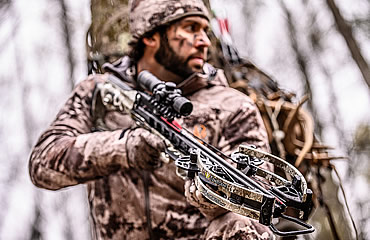The most important part of any hunt is returning to the ground safely.
It is estimated that one out of every three deer hunters who hunt from elevated stands will likely experience a fall at some point. Following are some tips to help keep you safe while hunting from your elevated stand.
1) Always read and understand the manufacturer’s instructions, guidelines and warnings before using a treestand, a safety harness or any other type of stand accessory or equipment.
2) Always use a Treestand Manufacturer’s Association (TMA) approved Full-Body Fall Arrest Harness System (FBFAHS) to be confident the harness has been designed and tested to meet the stringent manufacturing standards set forth by TMA. An FBFAHS works by distributing the arrest forces safely over your upper and lower body, and it allows you to be freer in your movement while using your hunting equipment.
3) While climbing, be sure to make slow, even movements and stay in contact with the tree or treestand with each movement. If you are hunting out of a ladder stand or an elevated blind with steps and a railing, always maintain three points of body contact with each step you take. Do so even if you use an always-connected setup like a Hunter Safety System Lifeline (also recommended).
4) Always use a hoist rope to raise your hunting gear into your stand after you have reached your desired height and after you have secured your FBFAHS to the tree. Likewise, lower your gear from your stand prior to disconnecting your FBFAHS and exiting.
5) Prior to hunting season, formulate and practice a routine for safe climbing, especially if you are using a climber-style treestand.
6) Avoid selecting trees that lean, are dead, unhealthy, crooked or heavily knotted.
7) Know your physical limitations and do not push past them. If you feel unsure about a climb in any way, have a backup hunting plan and consider a different setup for that day.
8) If you are planning to hunt alone, notify someone of your exact hunting location, dates and times.
9) Carry a communication or an emergency signal device like a cell phone, whistle, flashlight or flare that will allow emergency workers to pinpoint your exact location.
10) Carry a knife or cutting tool that you can access if you do experience a fall.
For more hunting tips, visit TenPoint Crossbows.
Read Recent Tip of the Week:
• Less Is More: Why spending less time in your best stand is a good thing.




.png)